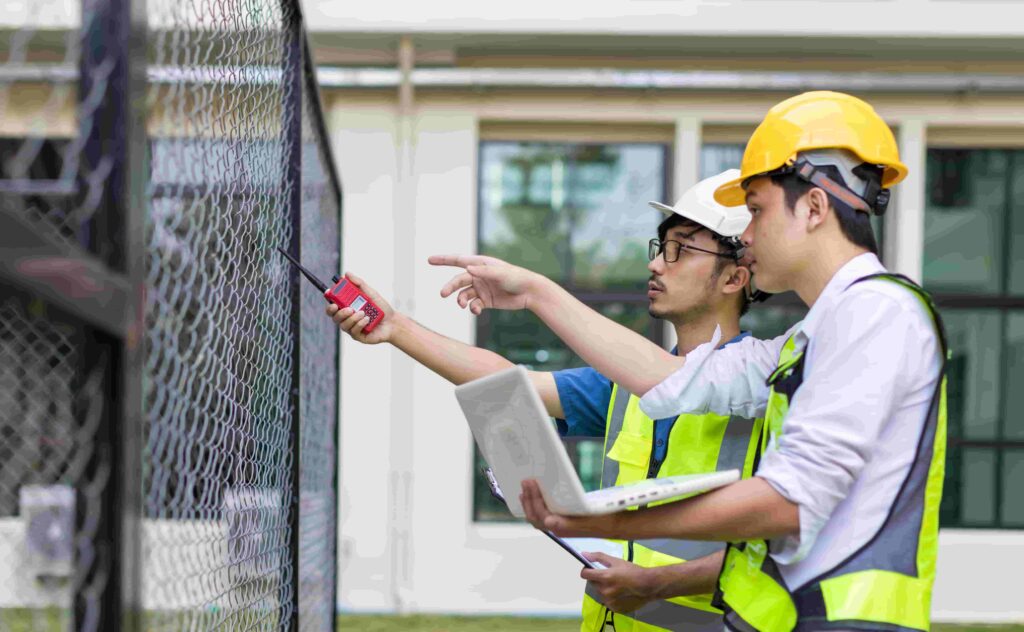
Fencing plays a critical role in security, privacy, and aesthetic enhancement for both residential and commercial properties. Accurately estimating the material and labor requirements for fencing systems is essential for contractors looking to submit competitive, profitable bids. Whether you’re installing chain link, wood, vinyl, or ornamental iron, fencing estimating involves precise data collection and cost forecasting to ensure that every foot of fencing is accounted for.
At True Bid Data, we provide a data-driven approach to fencing estimation, simplifying the process of material takeoffs, labor forecasting, and cost tracking. Our platform ensures that you’re always one step ahead in the bidding process, delivering accurate results for every fencing project, no matter the size.
Key Components of Fencing Estimating
When estimating for fencing, several key elements must be factored in to ensure that the takeoff is as precise as possible:
- Fence Material: The type of material significantly affects the overall cost—chain link, wood, vinyl, and metal each have different price points and installation processes.
- Height of the Fence: Taller fences require more materials and labor to install. The height also impacts how the fence must be secured and whether it requires additional supports.
- Length of the Fence: This is one of the most straightforward measurements but can vary depending on the terrain and layout of the property.
- Posts and Gates: Posts are required at regular intervals and at the corners of a fence, and additional costs arise from gates (which may have hardware and require more complex installations).
- Terrain and Access Conditions: Fencing on uneven ground or in areas that are difficult to access (steep slopes, rocky terrain) will require more labor and equipment, which increases the overall cost.
A comprehensive fencing takeoff includes these components, along with any additional specificities from the project, such as finishing treatments (staining, painting, or vinyl coating) and installation details (underground footings or surface mounts).
Digital Tools for Fencing Takeoffs
Digital estimating tools have revolutionized how contractors perform fencing takeoffs. At True Bid Data, we utilize advanced PDF and CAD takeoff tools that automatically extract the necessary dimensions and quantities from your project’s plans. These tools make it easier to:
- Measure the perimeter of the site or property and divide it into sections that require different types of fencing or installation techniques.
- Identify and calculate posts, gates, and other accessories like caps or finials, ensuring they are all included in the takeoff.
- Factor in terrain variations that affect the material quantities, such as slopes or landscaping elements.
Digital takeoff tools allow for quick, accurate measurements that reduce human error and ensure that every detail, no matter how small, is captured.
Material Cost Breakdown for Fencing
Once you have your quantities, the next step in fencing estimating is assigning costs to materials. Materials can vary significantly depending on type, quality, and source. Common fencing materials include:
- Wood: Traditional wood fencing requires lumber for the panels and posts, with different wood types like cedar, pine, or redwood each having their own cost structures.
- Chain Link: Galvanized steel is the primary material for chain-link fences, with prices influenced by gauge and height.
- Vinyl: A higher-end alternative to wood, vinyl fencing offers low maintenance but comes at a premium cost.
- Metal/Ornamental Iron: Wrought iron and aluminum are strong, durable options that tend to cost more per linear foot due to the material and specialized installation techniques.
By linking material costs to accurate quantity takeoffs, you can forecast the overall material cost for each section of the fence. True Bid Data also allows you to integrate real-time supplier data, ensuring that material costs reflect current market prices.
Labor Cost Forecasting for Fence Installation
Labor costs make up a significant portion of the total fencing cost, and estimating these accurately is key to delivering a reliable bid. Labor forecasting for fencing includes:
- Installation Time: Fencing installation time varies by material type and fence height. Wood fences often take longer to install than chain-link due to the complexity of constructing panels and posts.
- Crew Size: The crew size can differ based on the size and scope of the project. Larger projects may require multiple teams working simultaneously.
- Site Preparation: Uneven or difficult terrain may require additional labor for leveling ground or preparing the surface for installation.
By factoring in local labor rates and project complexity, True Bid Data helps you apply realistic labor productivity rates for each type of fencing installation.
The Impact of Site Conditions on Fencing Cost
Site conditions can heavily influence the cost and complexity of a fencing project. Considerations like:
- Land Accessibility: Remote locations, steep slopes, or properties with significant obstacles (trees, rock outcroppings, etc.) will require more effort to access and install the fence.
- Surface Conditions: Installing fences on hard surfaces like concrete may require specialized anchors or adjustments to installation methods, affecting both time and materials.
- Environmental Factors: Weather conditions can also play a role in the planning and scheduling of the project, particularly for certain materials that require dry conditions for proper installation.
By incorporating these factors into your takeoff, True Bid Data provides a comprehensive view of how site-specific variables will influence your project’s overall cost.
Common Pitfalls in Fencing Estimating
Even experienced estimators can miss details in fencing projects. Some common issues include:
- Underestimating Fence Height Requirements: Not accounting for post depth, especially on uneven terrain.
- Ignoring Fence Gates and Latches: Gates often have different material and labor costs than the fence itself, which can be overlooked.
- Failing to Include Waste: Material waste from cuts, breaks, and errors can add up quickly in fencing projects.
- Not Factoring in Local Regulations: Zoning laws, height restrictions, and required permits should always be considered in the estimation process.
True Bid Data’s integrated workflows and checklists help avoid these pitfalls by ensuring every part of the project is properly accounted for in the initial estimate.
Streamline Your Fencing Estimates with True Bid Data
Fencing estimating doesn’t have to be time-consuming or prone to errors. By using data-driven tools, accurate material and labor forecasts, and digital takeoff systems, True Bid Data helps you streamline the process and produce more reliable bids.
From estimating material quantities and labor to integrating site conditions and supplier data, True Bid Data empowers contractors to deliver competitive and accurate fencing bids every time.
Visit True Bid Data to learn more about how our tools can help you optimize your fencing takeoffs and improve project profitability.




